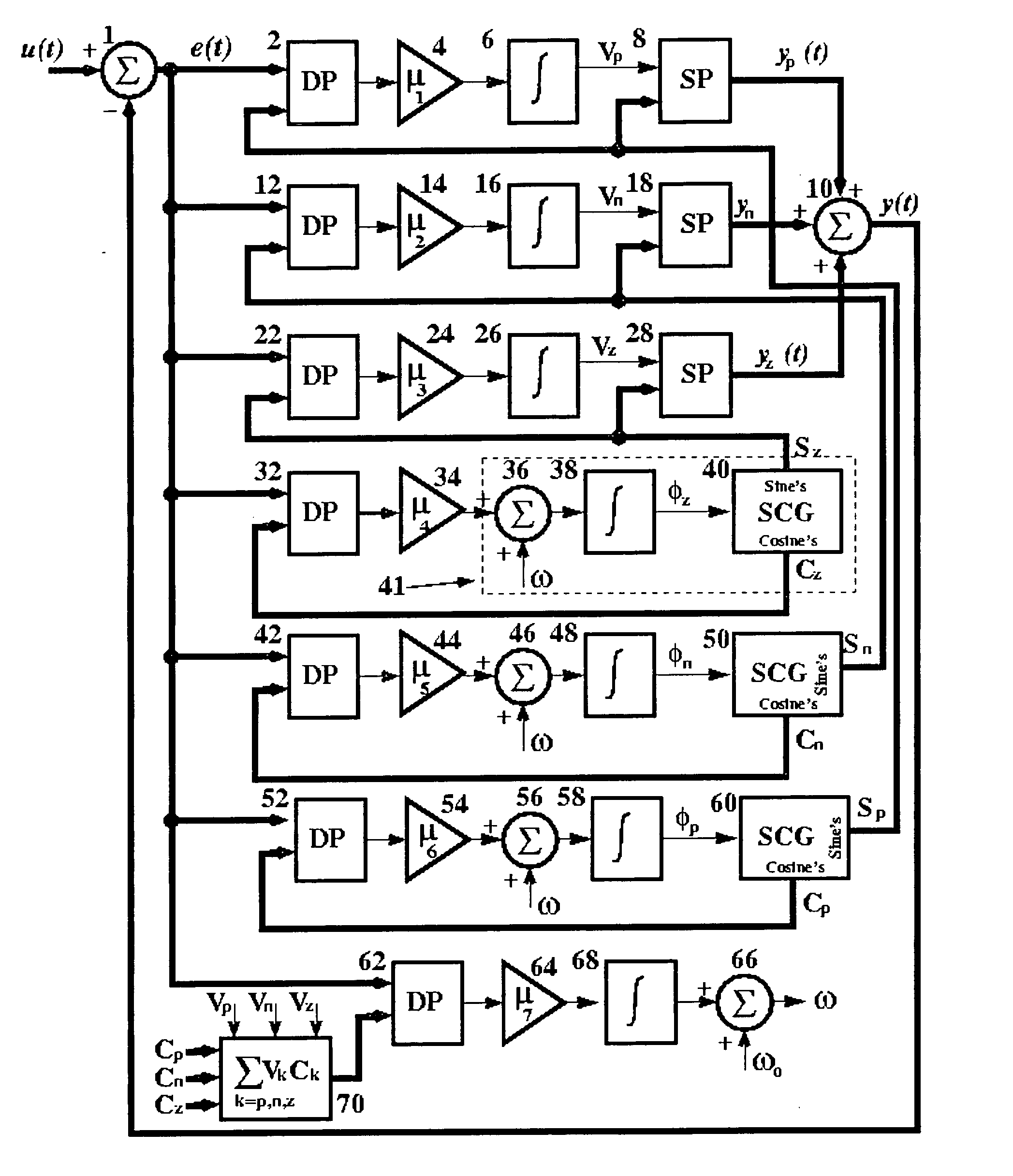Three-phase power signal processor
a three-phase power signal and processor technology, applied in the field of signal processing algorithms, systems and circuits, can solve the problems of general obviating the shortcomings of conventional methods and related algorithms, distortion, unbalanced signals, lack of adjustability and tuning, etc., to achieve improved accuracy in the results, high immunity, and easy implementation
- Summary
- Abstract
- Description
- Claims
- Application Information
AI Technical Summary
Benefits of technology
Problems solved by technology
Method used
Image
Examples
Embodiment Construction
[0036] With reference to the accompanying drawings and in particular to FIG. 1, the TPSP (10) system of the invention includes a plurality of components, namely circuits and system components or signal processing operations, as described below. The subtraction unit (1) subtracts the input signals U(t) from the output signals Y(t) of the TPSP (10). The output signal Y(t) consists of the estimated fundamental components of the input signal which is made available by the TPSP (10). The generated signal by the subtraction (1), E(t), is called the error signal which constitutes the totality of all the distortion and noise present on the input signal.
[0037] The TPSP (10) is graphically represented by seven branches as drawn in FIG. 1. A functional description of each one, in the order from top to bottom of FIG. 1, is as follows. It is obvious to any person familiar with the concepts of circuits and systems and signal processing that various versions of the block-representation given by F...
PUM
 Login to View More
Login to View More Abstract
Description
Claims
Application Information
 Login to View More
Login to View More - R&D
- Intellectual Property
- Life Sciences
- Materials
- Tech Scout
- Unparalleled Data Quality
- Higher Quality Content
- 60% Fewer Hallucinations
Browse by: Latest US Patents, China's latest patents, Technical Efficacy Thesaurus, Application Domain, Technology Topic, Popular Technical Reports.
© 2025 PatSnap. All rights reserved.Legal|Privacy policy|Modern Slavery Act Transparency Statement|Sitemap|About US| Contact US: help@patsnap.com



